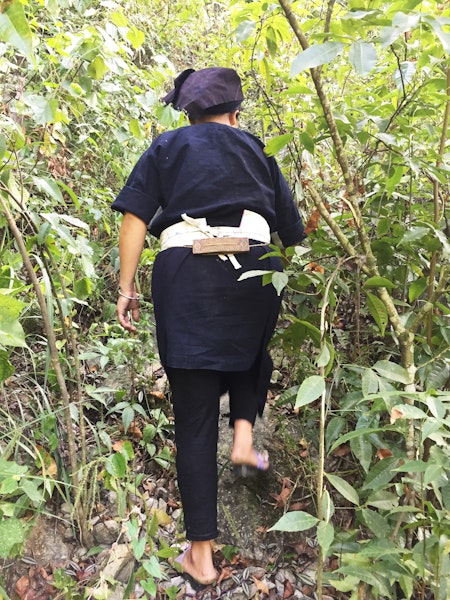March 08, 2017
Two friends travel to Vietnam in search of inspiration for their sustainable fashion brand

“Made in Bangladesh” our clothes say. Have you ever wondered about the hands behind these clothes? The answer is often girls and young women. Despite it being a job of high-demand, they are paid lowly wages due to the middle men that reaps the profit.
A few years ago, Lesley travelled to the slums of Dhaka where she met a group of women, in an organization-run programme that trained them to run a tea stall. These women were motivated to better themselves and their community. Many had experiences in sewing. Building upon this skill, Lesley and Julia plan to give them an educational and economic opportunity.
Julia works in the craft beer industry whilst Lesley works for an organization that creates social initiatives. Together, these two Californian friends are starting something socially orientated on their own — a sustainable clothing line.
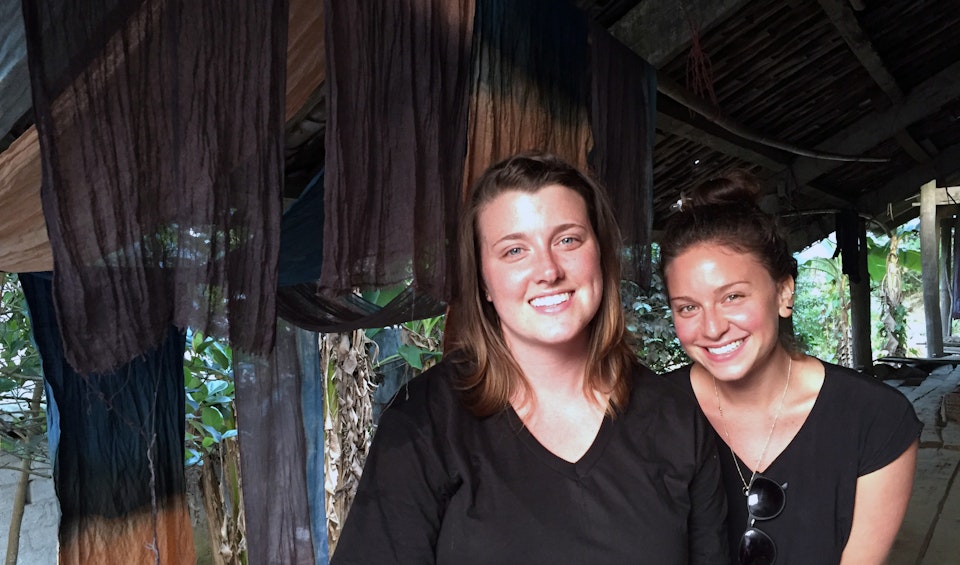
Julia and Lesley. Courtesy of Thao.
Through their brand, they seek to create a conscious Tween consumer that understands the lives of girls all around the world. The challenge was designing for them whilst incorporating design influence from Bangladesh. When they encountered VAWAA experience Vacation with Thao, they saw correlation between the fundamental making of natural dyes to sustainable practices. Thus, they flew to Vietnam to learn from an inspiring woman who gives back to her community, as well.
What have you learnt from Vu Thao that you will apply to your brand?
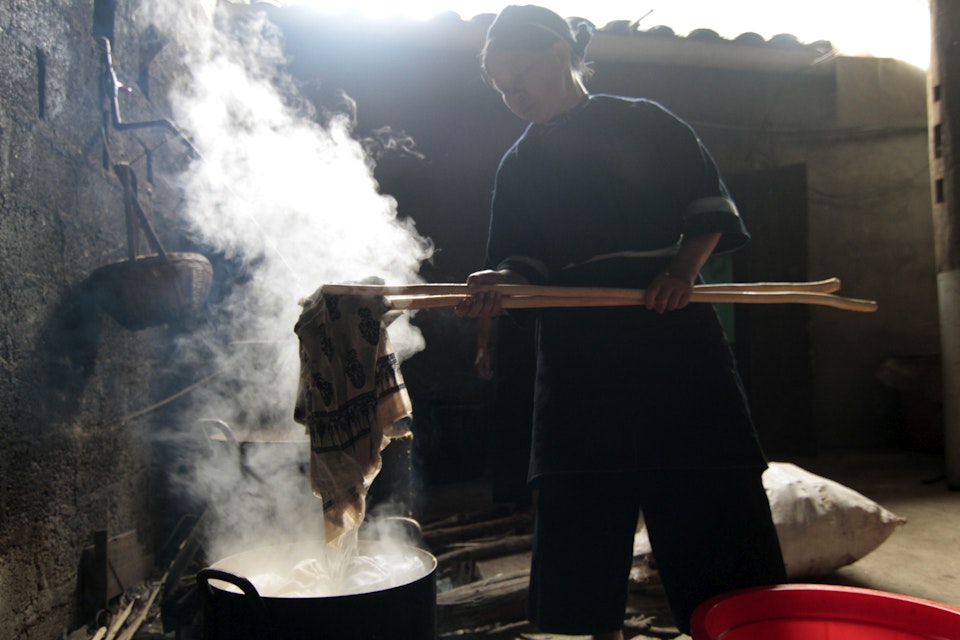
Courtesy of Julia Larsen and Lesley Onstott.
LESLEY: She was one of the first designers in Vietnam to truly pursue working with traditional craftspeople who dye and create their own fabrics. Her journey to incorporating this into her work was not simple. Yet, she persevered, because she not only understood the importance of it for these fading cultures and traditions, but to the environment and her customers. She fully embraces the customs and incorporates it beautifully into her work, proving that beautiful design and sustainable, traditional practices are not exclusive, but instead inspiring.
JULIA: I loved how Thao seemed to balance throwing herself into the process and respecting the fact that she had a lot to learn from the women themselves. She wants to be not only involved, but able to perform every step of production and she also acknowledges that the women are her teachers. It’s a delicate line to walk, but she does it very gracefully.
Tell us about your fondest memory with Thao.
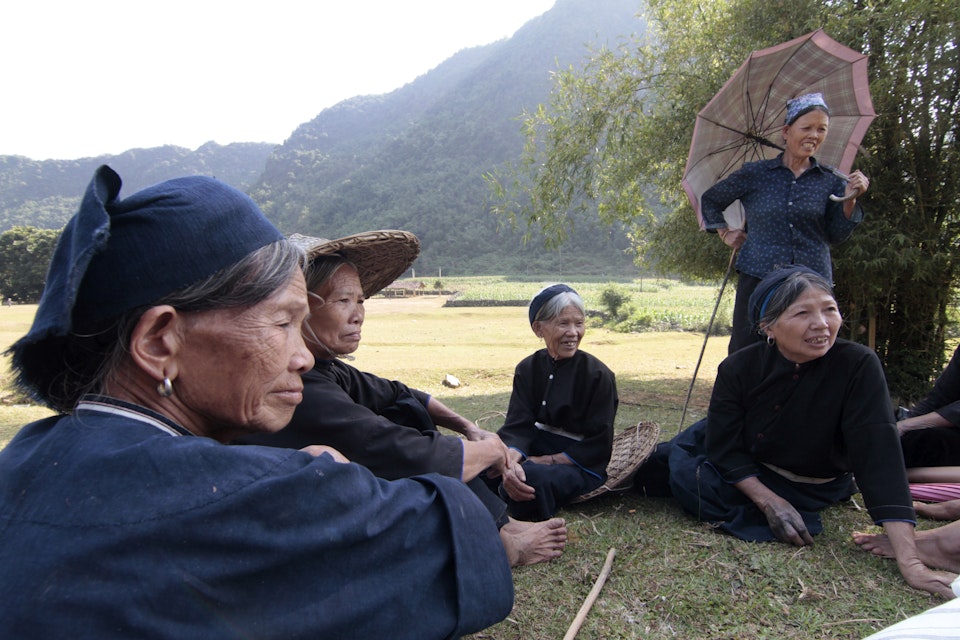
Courtesy of Julia Larsen and Lesley Onstott.
JULIA: My fondest memory was when we were heading back to the village and she veered off the main road onto a field. I was on the second motorbike, and we followed. She saw some of the other ladies she works with herding their cattle, so we stopped off to see them. We sat under a tree and shared sticky rice Thao had in her purse and visited the women. As the minutes ticked by, more and more women came to sit with us under the field, and Thao was our interpreter. It was one of those surreal moments you’re lucky to experience when travelling where you feel like you’re in a completely different world, but you feel very much at home.
What did your day-to-day VAWAA experience look like?
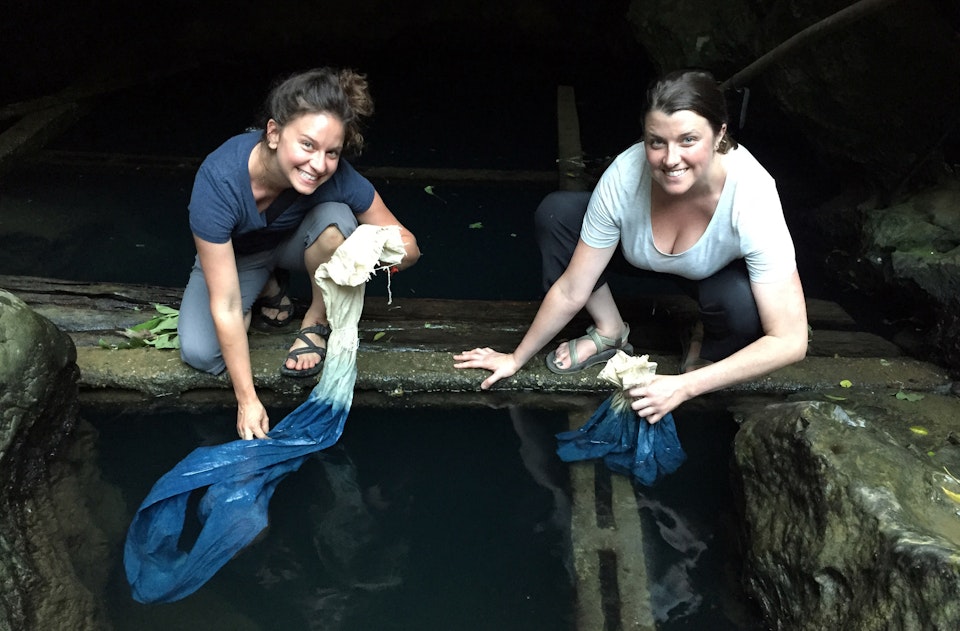
Courtesy of Thao.
LESLEY: We spent almost the entirety of our time with Thao in Cao Bang, a province in northern Vietnam. It was such an incredible experience, being in an area that is less prone to tourism, while more in touch with the local and traditional Vietnamese tribes.
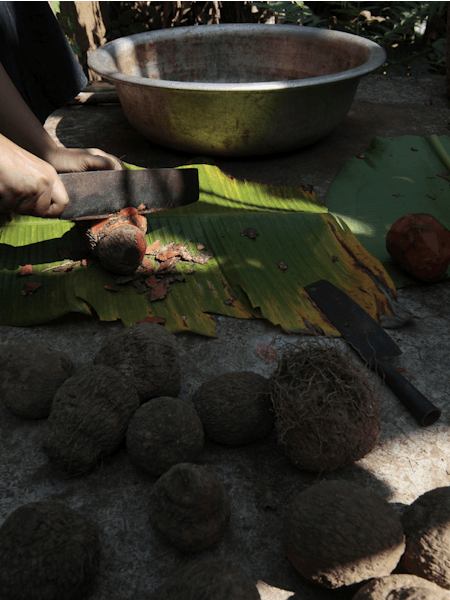
Courtesy of Julia Larsen and Lesley Onstott.
Every day, we visited a group of three Nung An women who work with Thao. We had very full days learning the steps of natural dyeing, namely indigo, though we did make a yam dye and a green tea dye. We participated in every step from harvesting indigo to attempting to hike up a hill to scavenge for tree bark. In the end Nyet sent us back down so we would avoid poison ivy, and she came back down the hill carrying an entire tree!
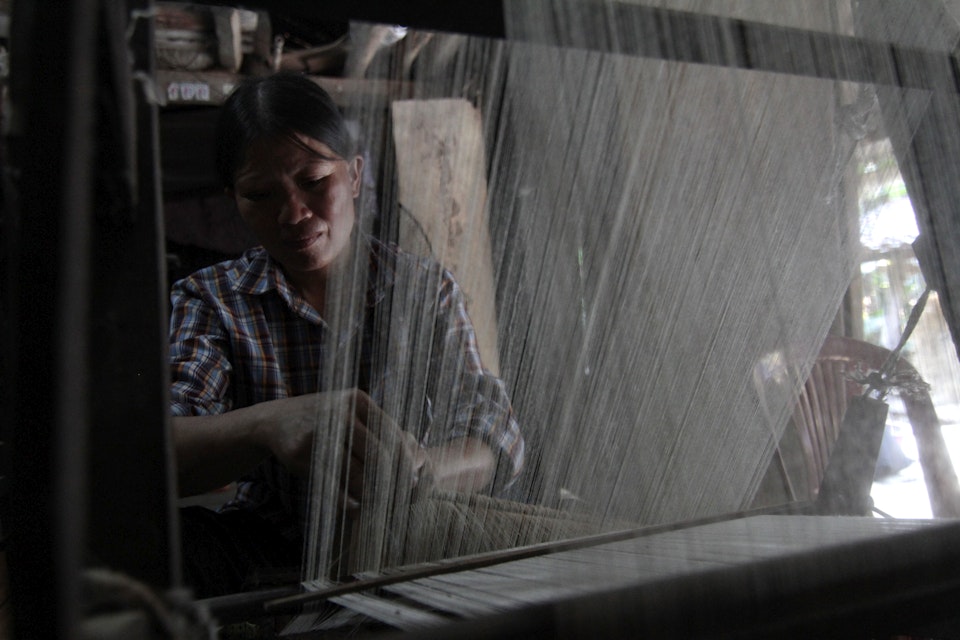
Courtesy of Julia Larsen and Lesley Onstott.
We bought additional fabric at the local market and practiced dyeing when the time came. Every lunch and breakfast we ate alongside Thao, giving us the opportunity to hear about her work and her life. Her energy and capacity to care so deeply about not only her work, but her family, these women and even us, was perhaps the biggest takeaway in the end.
What is the role of natural dyes in sustainable fashion?
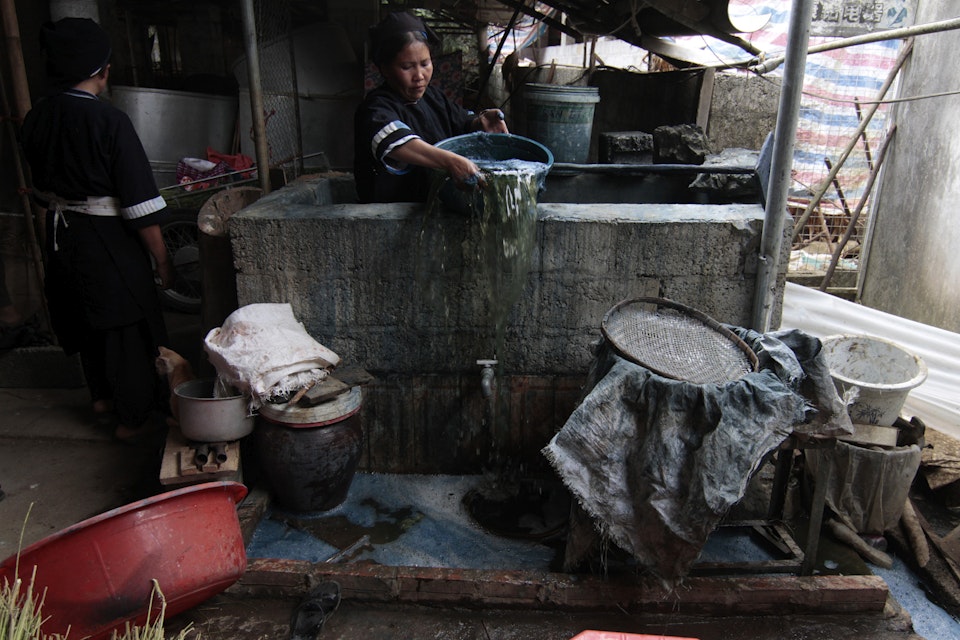
Courtesy of Julia Larsen and Lesley Onstott.
LESLEY: They are a way to create a deeper connection between the product and the materials. Natural dyes are not toxic. The toxins that are transferred to the wearer’s skin and absorbed by the environment can cause detrimental effects.
What can people do to start on their journey to a more sustainable fashion?
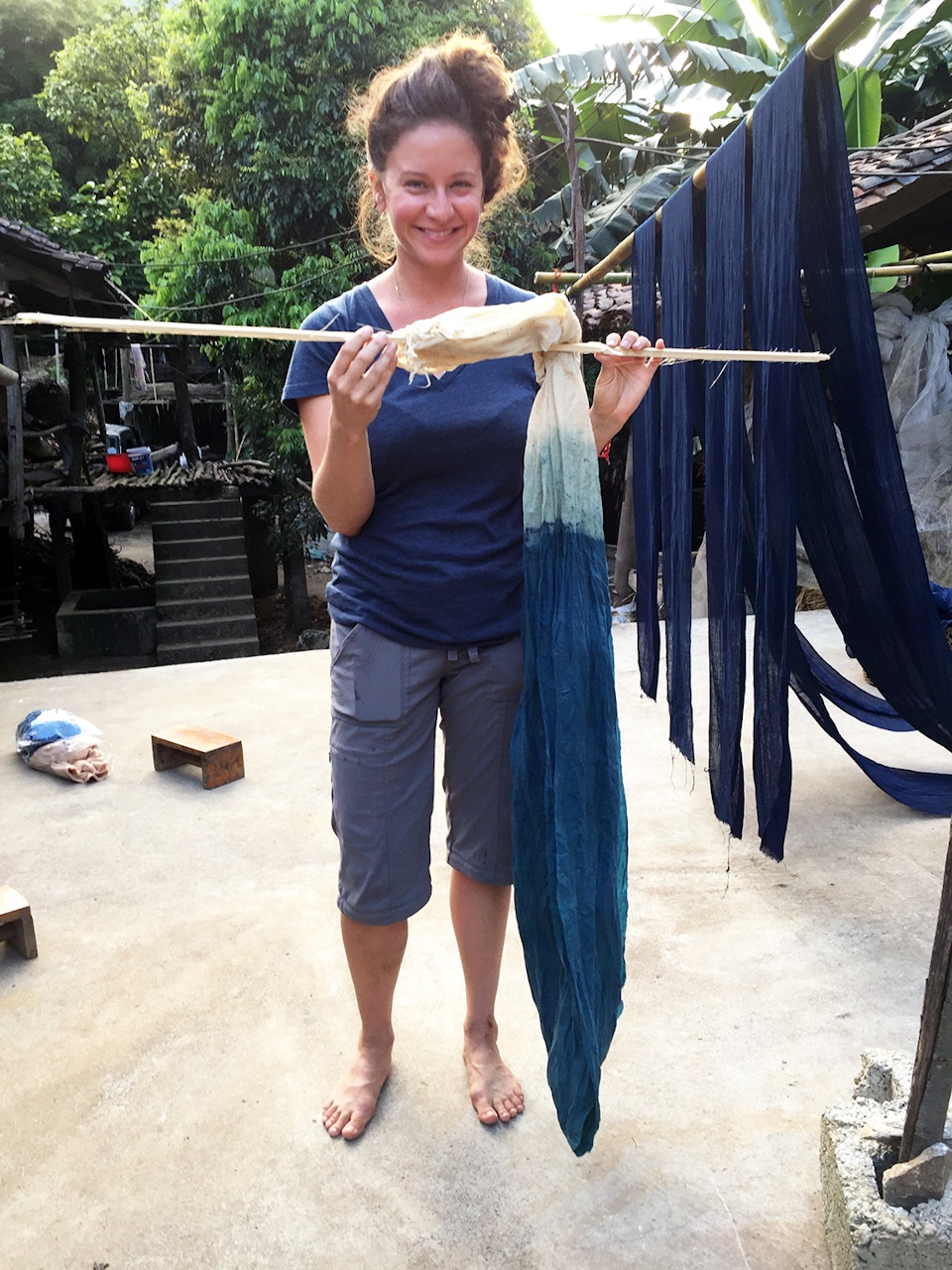
Courtesy of Thao.
JULIA: Folks should start by watching a documentary on the subject. “The True Cost” gives an encompassing view of how fast fashion affects the people who make our clothes and our planet. Then, be sure that everything you buy, you’ll wear at least 30 times. Another good step is to support clothing companies with sustainable practices.
Written by Ann Ravinther
Vacation with Thao in Cao Bang, Vietnam.
Follow Julia and Lesley’s journey on Instagram.
For more stories and new artist updates, subscribe here.
